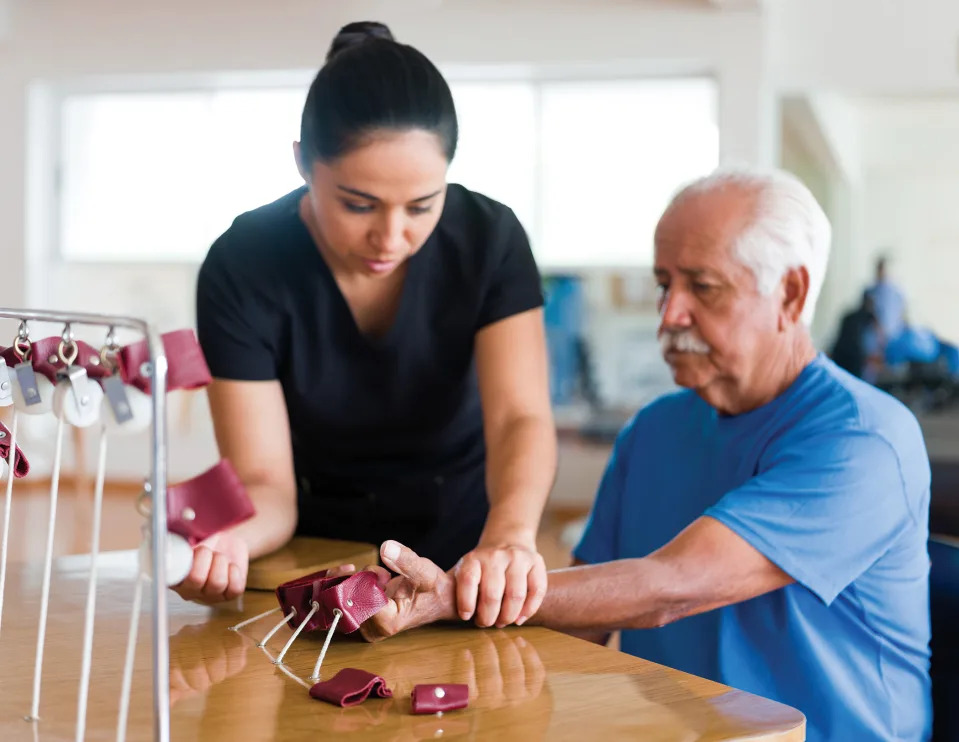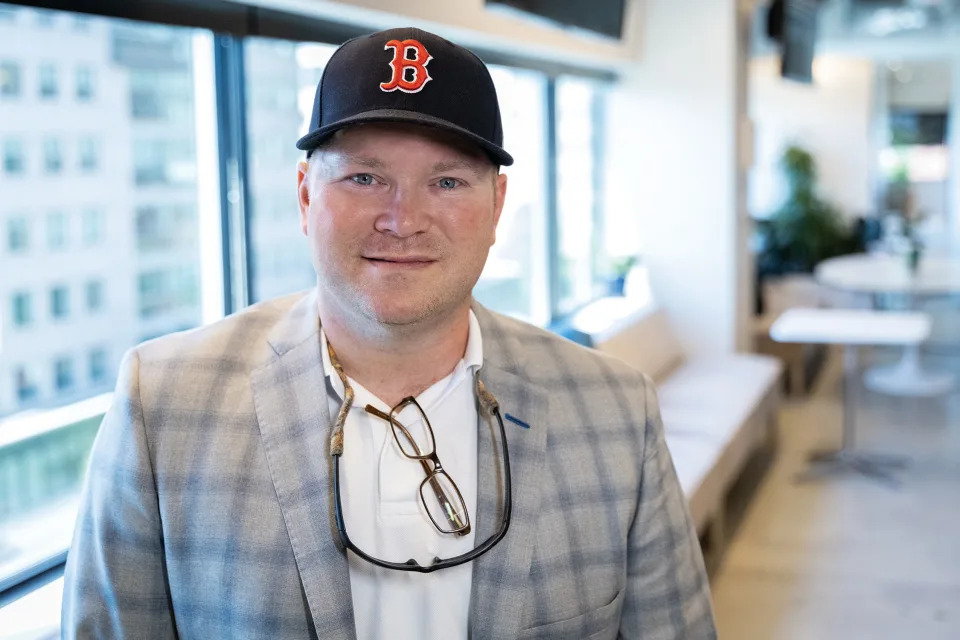Jay Miles has lived his 52 years without marriage or children, which
has suited his creative ambitions as a videographer in Connecticut and,
he said, his mix of “independence and stubbornness.” But he worries
about who will take care of him as he gets older.
Donna Selman, a
55-year-old college professor in Illinois, is mostly grateful to be
single, she said, because her mother and aunts never had the financial
and emotional autonomy that she enjoys.
Mary Felder, 65, raised
her children, now grown, in her row house in Philadelphia. Her home has
plenty of space for one person, but upkeep is expensive on the
century-old house.
Sign up for The Morning newsletter from the New York Times
Felder,
Miles and Selman are members of one of the country’s fastest-growing
demographic groups: people 50 and older who live alone.
In 1960,
just 13% of American households had a single occupant. But that figure
has risen steadily, and today it is approaching 30%. For households
headed by someone 50 or older, that figure is 36%.
Nearly 26
million Americans 50 or older now live alone, up from 15 million in
2000. Older people have always been more likely than others to live by
themselves, and now that age group — baby boomers and Gen Xers — makes
up a bigger share of the population than at any time in the nation’s
history.
The trend has also been driven by deep changes in
attitudes surrounding gender and marriage. People 50-plus today are more
likely than earlier generations to be divorced, separated or never
married.
Women in this category have had opportunities for
professional advancement, homeownership and financial independence that
were all but out of reach for previous generations of older women. More
than 60% of older adults living by themselves are female.
“There
is this huge, kind of explosive social and demographic change
happening,” said Markus Schafer, a sociologist at Baylor University who
studies older populations.
In interviews, many older adults said they feel positively about their lives.
But
while many people in their 50s and 60s thrive living solo, research is
unequivocal that people aging alone experience worse physical and mental
health outcomes and shorter life spans.
And even with an active
social and family life, people in this group are generally more lonely
than those who live with others, according to Schafer’s research.
In
many ways, the nation’s housing stock has grown out of sync with these
shifting demographics. Many solo adults live in homes with at least
three bedrooms, census data shows, but find that downsizing is not easy
because of a shortage of smaller homes in their towns and neighborhoods.
Compounding
the challenge of living solo, a growing share of older adults — about 1
in 6 Americans 55 and older — do not have children, raising questions
about how elder care will be managed in the coming decades.
“What will happen to this cohort?” Schafer asked. “Can they continue to find other supports that compensate for living alone?”
Planning for the Future
For many solo adults, the pandemic highlighted the challenges of aging.
Selman,
the 55-year-old professor, lived in Terre Haute, Indiana, when COVID-19
hit. Divorced for 17 years, she said she used the enforced isolation to
establish new routines to stave off loneliness and depression. She quit
drinking and began regularly calling a group of female friends.
This
year, she got a new job and moved to Normal, Illinois, in part because
she wanted to live in a state that better reflected her progressive
politics. She has met new friends at a farmers’ market, she said, and is
happier than she was before the pandemic, even though she occasionally
wishes she had a romantic partner to take motorcycle rides with her or
just to help carry laundry up and down the stairs of her three-bedroom
home.
She regularly drives 12 hours round trip to care for her
parents near Detroit, an obligation that has persuaded her to put away
her retirement fantasy of living near the beach, and move someday closer
to her daughter and grandson, who live in Louisville, Kentucky.
“I don’t want my daughter to stress out about me,” she said.
Watching
their own parents age seems to have had a profound effect on many
members of Gen X, born between 1965 and 1980, who say they doubt that
they can lean on the same supports that their parents did: long
marriages, pensions, homes that sometimes skyrocketed in value.
When
his mother died two years ago, Miles, the videographer, took comfort in
moving some of her furniture into his house in New Haven, Connecticut.
“It
was a coming home psychologically,” he said, allowing him to feel
rooted after decades of cross-country moves and peripatetic career
explorations, shifting from the music business to high school teaching
to producing films for nonprofits and companies.
“I still feel pretty indestructible, foolishly or not,” he said.
Still,
caring for his divorced mother made him think about his own future. She
had a government pension, security he lacks. Nor does he have children.
“I can’t call my kid,” he added, “the way I used to go to my mom’s house to change light bulbs.”
His options for maintaining independence are “all terrible,” he said. “I’m totally freaked out by it.”
Several
Gen X solo dwellers said they had begun exploring options to live
communally as they age, inspired, in part, by living arrangements they
had enjoyed in college years and young adulthood.
“I’ve been
talking to friends about end-of-life issues and how we might want to get
together,” said Patrick McComb, 56, of Riverview, Michigan, a graphic
artist. “Being alone till the end would not be the worst thing in the
world. But I would prefer to be with people.”
With Space to Spare
Katy
Mattingly, 52, an executive secretary, bought a house in Ypsilanti,
Michigan, three years ago. It is small but offers plenty of space, with
three bedrooms.
The question for her, and many other single homeowners, is whether they can cash in when they get older.
Mattingly said she did not think she would ever be able to pay down the mortgage and build wealth.
“It’s implausible that I’ll ever be able to retire,” she said.
Living
solo in homes with three or more bedrooms sounds like a luxury but,
experts said, it is a trend driven less by personal choice than by the
nation’s limited housing supply. Because of zoning and construction
limitations in many cities and towns, there is a nationwide shortage of
homes below 1,400 square feet, which has driven up the cost of the
smaller units, according to research from Freddie Mac.
Forty years
ago, units of less than 1,400 square feet made up about 40% of all new
home construction; today, just 7% of new builds are smaller homes,
despite the fact that the number of single-person households has surged.
This
has made it more difficult for older Americans to downsize, as a large,
aging house can often command less than what a single adult needs to
establish a new, smaller home and pay for their living and health care
expenses in retirement.
People in this group often face the
reality that “it’s more expensive to get a smaller condo than the single
family you’re selling — and that presumes the condo exists, which may
not be the case,” said Jennifer Molinsky, director of the Housing an Aging Society Program at Harvard University.
And
when they hold onto family-size houses well into retirement, there are
fewer spacious homes placed on the market for young families, who in
turn squeeze into smaller units or withstand long commutes in a search
for affordable housing.
“Both ends of the age distribution are
getting squeezed,” said Jenny Schuetz, an expert on housing and urban
economics at the Brookings Institution.
The constraints are
especially severe for many older Black Americans, for whom the legacy of
redlining and segregation has meant that homeownership has not
generated as much wealth. The percentage of people living alone in large
houses is highest in many low-income, historically Black neighborhoods.
In those areas, many homes are owned by single, older women.
One
of them is Felder of Strawberry Mansion, a neighborhood in Philadelphia.
She and her ex-husband bought their two-story brick row house in the
mid-1990s for a song after it was damaged in a fire.
While raising
three children, Felder worked a series of jobs, including retail, hotel
housekeeping and airport security. She retired in 2008 and has lived by
herself for more than a decade, although her sisters, children and
grandchildren live nearby.
Maintaining her home is a challenge. In
rainstorms, she sometimes had to use every piece of fabric in the house
to sop up water pouring down a kitchen wall. And she worries about her
safety.
At times, she dreams about relocating to small-town South Carolina, where she was born and raised.
She imagines a small home there, perhaps even a trailer.
But
the median value of a home in her neighborhood was $59,000, according
to recent census data. Felder thinks she could sell her house and net
about $40,000.
“That’s not enough” to retire down south, she said, sighing, sitting in her living room filled with plants.
Felder
is a fixture in her neighborhood, keeping watch over it, and has
received help from Habitat for Humanity to repair her roof.
But in September, living alone became harder.
While
she was cleaning the trash out of a nearby alley with neighbors, a
masked gunman looked her in the eyes and shot her twice in the legs.
Felder
had no clue who shot her, and there has been no arrest. She recovered
at her daughter’s home across town, where the ground floor has a bedroom
and bathroom, unlike in her own house.
By late November, she was
feeling much better — physically, if not mentally, she said. But she had
not stayed overnight in her own home. She is still a little afraid.
“But I’m working on it,” she said. “I really love my house.”
© 2022 The New York Times Company







